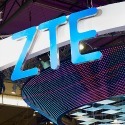Chinese equipment vendor's recovery stalls in the first quarter, but the company's involvement in domestic 5G projects could provide a boost later this year.

ZTE's recovery from US sanctions hit a setback in the first quarter as results published today showed a huge slump in cash flow and a worrying dip in revenues amid the outbreak of coronavirus.
The Chinese company saw revenues fall 3.2%, to around 21.5 billion Chinese yuan ($3 billion), and net profit shrink 27%, to about RMB809 million ($114 million), compared with the year-earlier period.
Even worse, its net cash flow from operating activities fell 70%, to RMB372 million ($53 million), as ZTE received less cash for its goods and services while spending more on components and labor.
The equipment vendor – which competes against Ericsson, Huawei and Nokia in the market for network products and services – provided no explanation for the hits to sales and profitability, which followed a resurgence in 2019 marked by strong sales growth and market share gains.
Higher spending on research and development was only partly responsible for the decline in profitability, with ZTE investing 15% of revenues in R&D, up from about 14% in the year-earlier period.
Like bigger domestic rival Huawei, ZTE has been trying to find alternatives to US suppliers ever since it was temporarily banned from buying US-made components in 2018, following charges that it breached trade sanctions against Iran and North Korea. Eventually lifted after payment of a hefty fine, that ban nearly drove ZTE out of business and led to a RMB7 billion ($1 billion) loss that year.
The company bounced back in 2019, swinging to a net profit of RMB5.1 billion ($720 million) and reporting sales growth of 6.1%, to RMB90.7 billion ($12.8 billion).
ZTE hacked into its workforce between 2015 and 2018 as it tried to stay afloat under US attack. Staff numbers fell from 84,622 in 2015 to 68,240 in 2018, but the recently published annual report for 2019 shows an increase last year, with headcount up to 70,066.
Investment in R&D explains that growth: ZTE had 28,301 R&D employees in 2019, up from 25,969 the year before, which means about 500 jobs were cut in other parts of the business.
ZTE's first-quarter decline mirrors a slowdown in business at Huawei and Ericsson over the same period. After its sales rose 19% in 2019, Huawei recorded growth of just 1.4% for the recent first quarter, while Ericsson's revenues fell 2%, on a like-for-like basis, after growing 4% last year.
Want to know more about 5G? Check out our dedicated 5G content channel
here on Light Reading.
On a positive note, ZTE's sales performance in the first quarter was an improvement over what happened a year earlier, when revenues fell 19%. But they suggest it is struggling to get back to its level in 2017, when full-year sales were about a fifth higher than ZTE managed in 2019.
Nevertheless, the company seems to have less exposure than its rivals to Western European countries that are still reeling from the impact of COVID-19. It can also look forward to a 5G boost in its domestic market later this year, as operators move ahead with plans to erect about half a million 5G basestations by the end of 2020.
Last month, ZTE won a RMB10.7 billion ($1.5 billion) 5G contract with China Mobile, picking up a bigger share of work with China's biggest operator than any other vendor apart from Huawei. China Telecom and China Unicom, the country's other national mobile operators, are expected to announce similar contract awards in the near future.
Related posts:
— Iain Morris, International Editor, Light Reading
About the Author(s)
You May Also Like











